Bang & Olufsen did not show any new TVs at IFA but focused on new audio products.
Changhong is selective on a country basis about where it sells TVs under its own brands in Europe. The firm plans to develop its ChiQ brand. While some of the Chinese vendors, such as Hisense and TCL don’t sound Chinese, the Changhong name is clearly from Asia. The ChiQ brand was being promoted at the show.
 Changhong is using the ChiQ Logo
Changhong is using the ChiQ Logo
The company is not yet in the UK, although it does sell in DACH, France, the Czech Republic (where it makes TVs in Europe) and Slovakia. It has some OEM business in the UK. The company was highlighting new products that are very slim (3mm) and based on OLED panels.
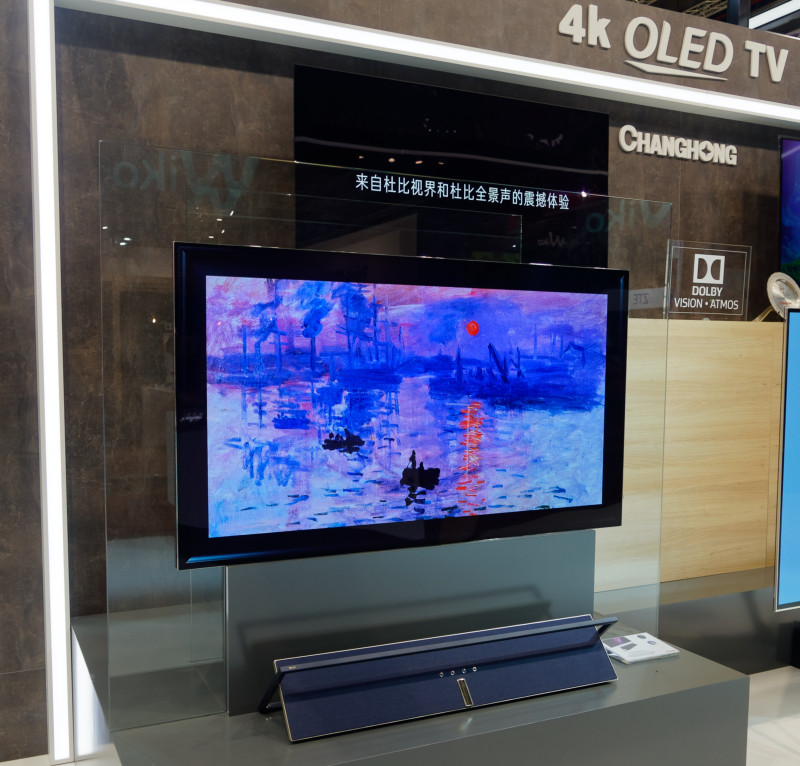 Changhong is developing a wallpaper OLED. Image:Meko
Changhong is developing a wallpaper OLED. Image:Meko
The company works with the Netrange OS, but is starting to launch Android-based TVs which should be in the market in around a year’s time. The company is developing far field microphones for control by voice.
There were no QD-based sets on display, but Changhong told us that it is developing miniLED BLUs in China, but outside China, the company doesn’t feel that its brand is strong enough to compete in the highest segments.
Chemion was in the start-up section and was showing its glasses with LEDs embedded and which can be used to show images and text. The content is controlled by bluetooth.
 These glasses have embedded LEDs. Image:Meko
These glasses have embedded LEDs. Image:Meko
CNC of China is mainly an OEM supplier outside China and had a big booth to show off its products. The company told us that it is looking at developing its branded sales outside China (within China, the brand is sold under its own name) and is thinking about an initiative into Europe.
Epson was next to TCL and had an area showing its home cinema projectors as well as some printers. It had an upgrade to the EH-TW7300 to the EH-TW7400 which has FullHD resolution (4K ‘Enhanced’) and edges up output to 2,400 Ansi lumens (from 2,300). The EH-TW9400 is an update to the EH-TW9300 and has been upgraded from 2.500 to 2,600 Ansi lumens. The HDMI has been upgraded to 2.0a and the projector can now support UltraHD at 60 fps with ‘enhancement’. The company told us that its projectors are not yet low latency, but gaming is becoming more important and may even go past the use of video. Epson also had its UST projectors on display and they were shown in home cinema configurations and also wall-mounted.
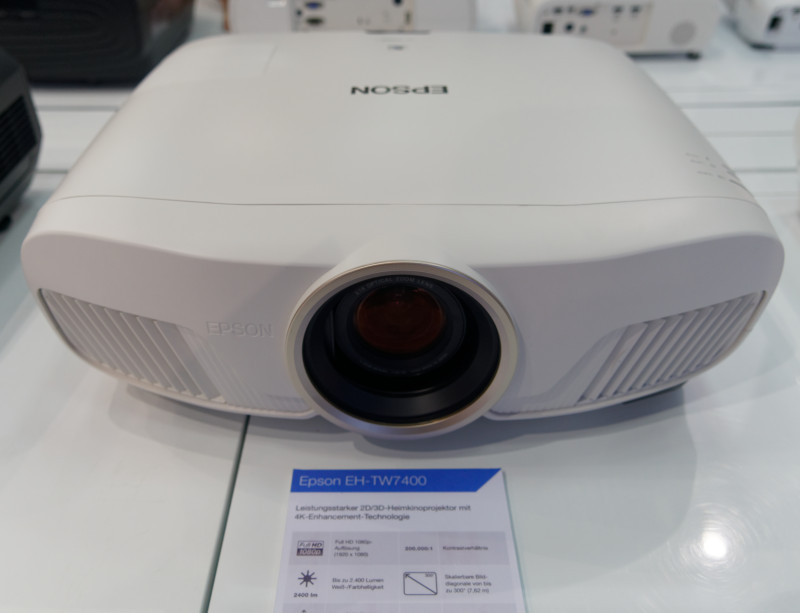 Epson’s upgrades are incremental. Image:Meko
Epson’s upgrades are incremental. Image:Meko
Garmin was showing its Fenix 5X Plus smartwatches which were announced a couple of months ago and add features including a pulse Ox acclimator for checking the blood condition during exercise. The display is a 1.2″ unit with 240 x 240 resolution. Specialist reviewers have described the fitness data as ‘exhaustive’ and the watch is regarded as ‘best in class’ for swimming.
 Garmin’s Fenix watches are ideal for sports. Image:Meko
Garmin’s Fenix watches are ideal for sports. Image:Meko
Haier of China had a very large booth but most of it was dedicated to appliances although there was an area covering TVs. The company currently has restricted distribution of TVs in Europe, but has a strong presence in the Russian market.
The first product we looked at was a 55″ edge-lit UltraHD LCD, the LE55X8000U that is just 5.2mm thick, although staff weren’t sure if the unit had a glass LGP. There was also a LE65X7000U which is a 65″ TV using QD technology to give a wider colour gamut and is likely to be available early in 2019. The case design uses glass as a back cover. 8K was covered with the LE75X7500SHV which is also a slim unit.
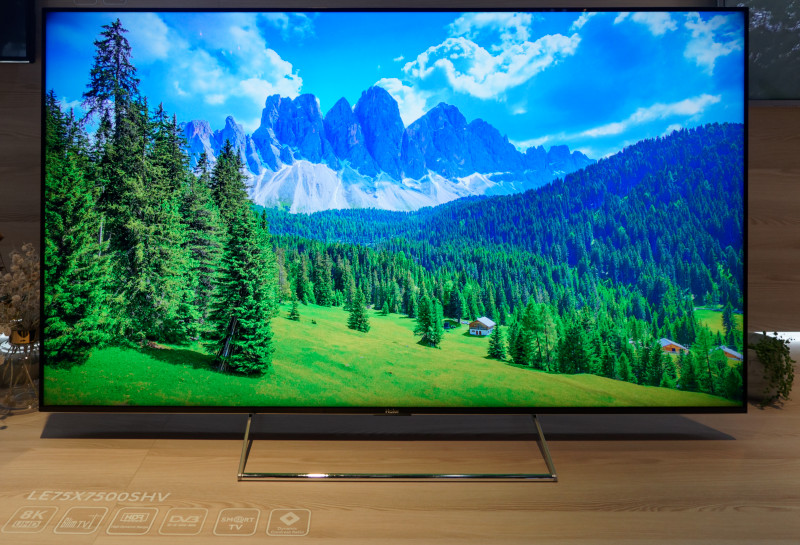 Haier had an 8K 75″ TV prototype on display. Image:Meko
Haier had an 8K 75″ TV prototype on display. Image:Meko
HKC didn’t seem keen to tell us what it is doing in displays. The company is still supplying monitors and TVs into brands in Europe and was highlighting its vertical integration with one G8.6 fab already in production of 23.6″, 31.5″, 43″, 50″ and 58″ panels in ChongQing. The capacity is 70,000 substrates/month and the next fab will be in ChuZhou. It will have the same size substrate and products, but will grow to a capacity of 155K substrates/month when it comes on line in May 2019. The company is also working on a G11 fab in ZhengZhou that is expected to have a capacity of 120,000 sheets/month when it opens. The firm is also planning for another G8.6 using IPS with 150K substrate capacity that might open in MianYang.
HTC was listed as appearing at the show, but the booth was just a sales booth for existing smartphones in collaboration with a distributor.
Icaros was in the IFA Next area as a start-up and is developing mechanical systems to allow the emulation of ‘flying’ using VR.
 Want to try flying in VR? Image:Meko
Want to try flying in VR? Image:Meko
Frustratingly, Chris was trying to see JVC‘s new D-ILA projectors but was not able to catch them doing a demo. That was particularly the case because we heard that they were showing native 4K projectors rather than the e-Shift units that have been the 4K units up to now. The new projectors also get a new tone-mapping algorithm as well as the new 0.69″ D-ILA chips. The N5 costs €6,499 for 1,800 lumens and 40,000:1 contrast, while the N7 gets up to 1,900 lumens, with double the native contrast at €8,499. At the top of the range is the 2,200 lumens DLA-NX9 which has native contrast of 100,000:1. It is THX-certified, has a new 100mm all glass lens and supports 8K inputs using e-Shift. They will reach the market in October.
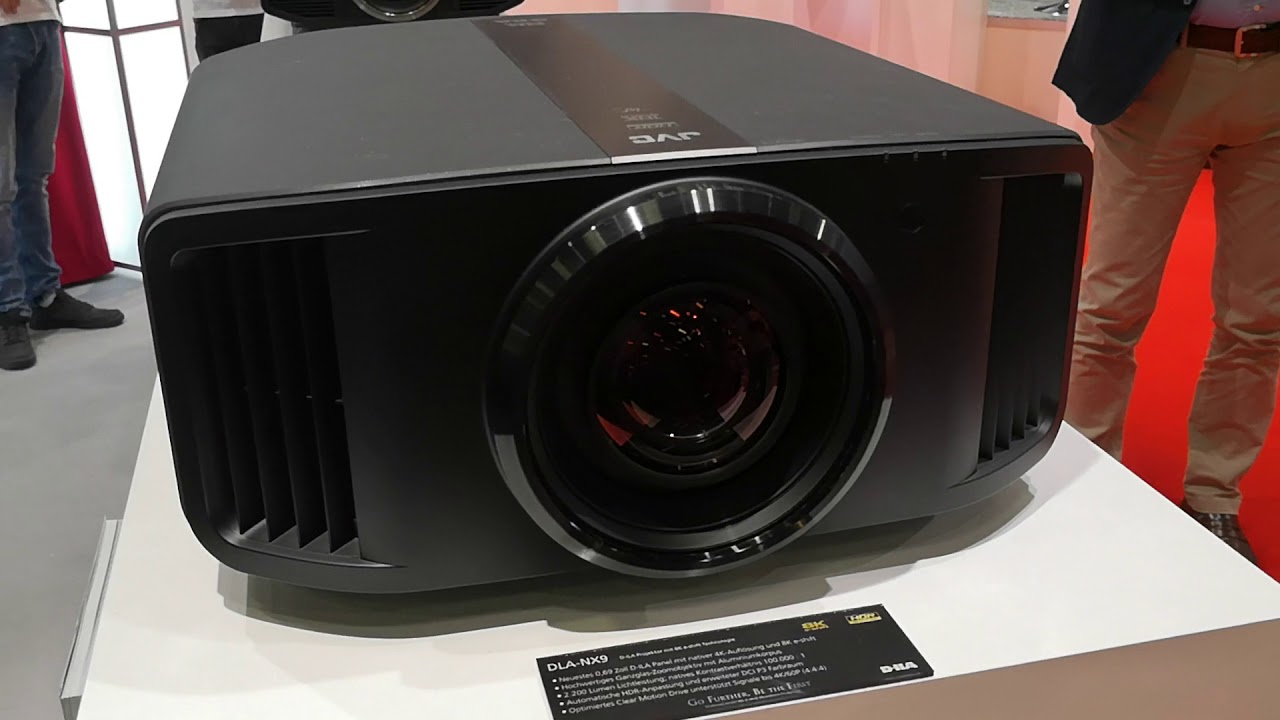 The JVC DLA-NX9 will support 8K video using e-Shift technology.Lapscreen is a start-up that is developing USB monitors and plans to bring them to market on Kickstarter or another crowd funding platform in early December after mass production next month. The company has been trying to develop products since 2011/2012 and wants to create displays ‘like a piece of paper”. The company has a number of ideas for developing multiple screen configurations. The initial product is expected to be a 12.5″ FullHD unit that will support USB (for power) and HDMI or USB Type-C.
The JVC DLA-NX9 will support 8K video using e-Shift technology.Lapscreen is a start-up that is developing USB monitors and plans to bring them to market on Kickstarter or another crowd funding platform in early December after mass production next month. The company has been trying to develop products since 2011/2012 and wants to create displays ‘like a piece of paper”. The company has a number of ideas for developing multiple screen configurations. The initial product is expected to be a 12.5″ FullHD unit that will support USB (for power) and HDMI or USB Type-C.
LapScreen wants to sell lots of USB monitors. Image:Meko
Microsoft was highlighting its Surface Go convertible product (Microsoft Officially Announces Smaller and Cheaper Surface Tablet) as well as the XBox One X and there was also an area devoted to demonstrations of the Hololens. The company also gave a keynote (Microsoft Expects Many Computing Devices)
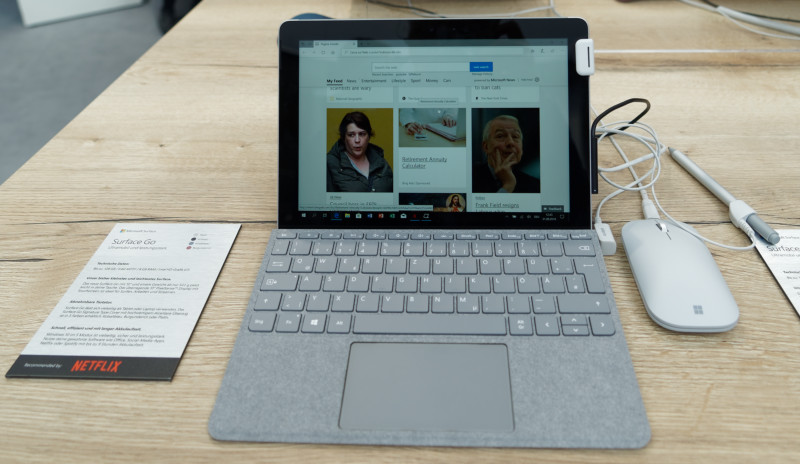 The Surface Go costs from $399. Image:Meko
The Surface Go costs from $399. Image:Meko
Mopic of Korea was in the IFA Next area, but had nobody on the booth when we went by. The company was showing its lenticular Snap3D converters to support auto-stereoscopic 3D on smartphones. The company had a special offer at 10 euro, compared to a list price of $25. The company has a range of technology solutions for AR and that can be used with monitors and tablets.
MSI was at the show and this is the first time that we have managed to catch up with the company since it entered the monitor market. The company is very focused around game playing and had its Optix MAG27CQ curved monitor with 2560 x 1440 resolution and 144Hz refresh with a VA panel. It is claimed to have a 1ms response time and has LEDs in the frame that synchronise to other MSI LED features.
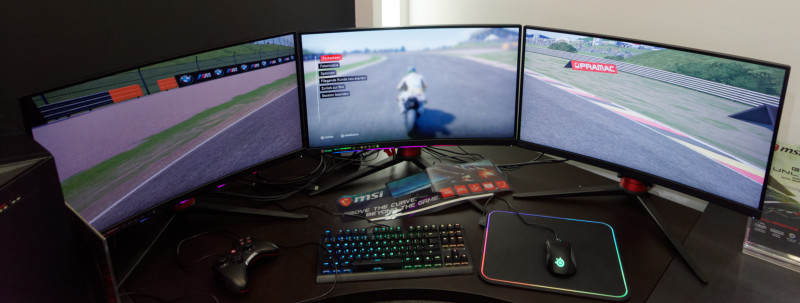 MSI had three of its curved gaming monitors. Image:Meko
MSI had three of its curved gaming monitors. Image:Meko
Local smartphone vendor, Nubia, which is doing reasonably well, it said, in Germany, Italy and Spain (all markets where SIM only contracts and handset purchase are popular), had a new smartphone for gaming called the ‘Red Magic’. The phone has an LED strip on the back that can be used to add colours according to the game being played. It has a 6.01″ FullHD LCD and a Snapdragon 835 with 8GB of RAM and 128GB of storage. Battery capacity is 3800 mAh and the main camera has 24MP.
The smartphone will cost around €450 and will be available from the middle of this month from Amazon, among others.
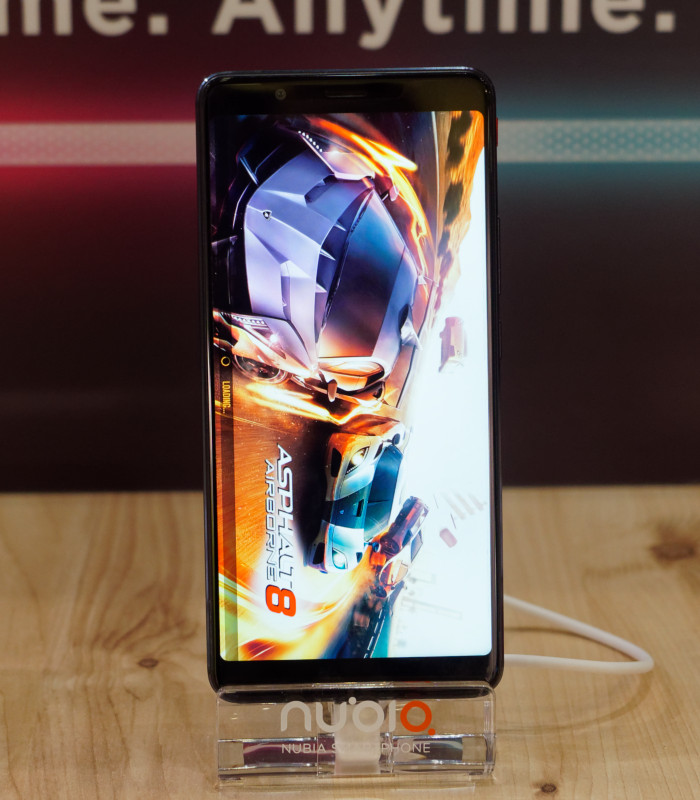 Nubia’s phone looked good. Image:Meko
Nubia’s phone looked good. Image:Meko
Bizarrely, Nubia didn’t draw our attention to the Nubia Alpha, a prototype devices that uses a flexible OLED but which is expected to ship in China at the end of the year. Check the video here.
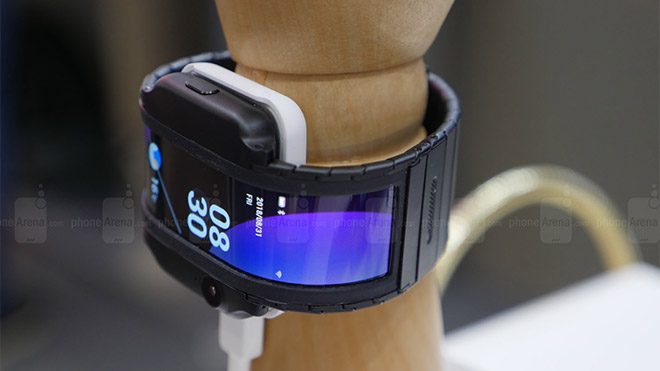 The Nubia Alpha uses a flexible OLED. Image:LOG
The Nubia Alpha uses a flexible OLED. Image:LOG
Optoma had a small booth and had its UHD51A UltraHD projector, which we reported on from CES. (Projection Round up from CES 2018) It is selling now for €1,500 plus tax. The HL10 is a 1080P home projector featuring an LED light source and 1,500 lumens. The projector has a two hour battery life, a fixed lens with 1.2:1 throw ratio and weighs 2.2kg. It costs €1,200.

The HZ45UST is an FullHD DLP projector with a UST lens and has 4,000 lumens of output. It will be available later in the year at around €2,300 and will be offered with a special screen, the RLR100 and will cost around €800 to €900.
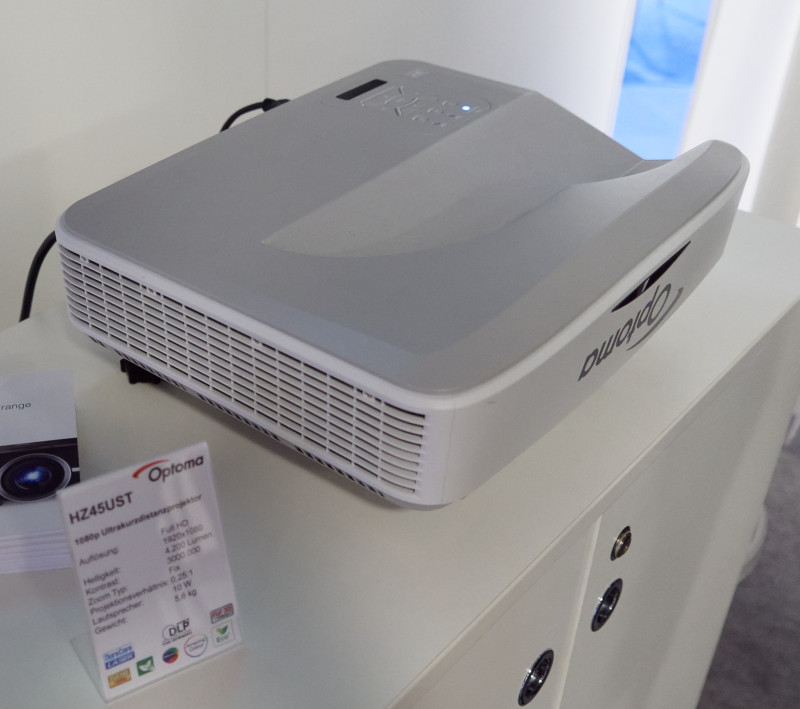 This UST projector will be available from Optoma later in Q4. Image:Meko
This UST projector will be available from Optoma later in Q4. Image:Meko
PNY told us that it would have six different versions of the Nvidia RTX GPUs, with single, twin and triple fans, but only a mock-up was available at IFA with no demos.
 There was just a mock-up of the RTX Nvidia GPU. Image:Meko
There was just a mock-up of the RTX Nvidia GPU. Image:Meko
Royole was at Showstoppers and also had its flexible OLEDs on show at the Messe. It had a demonstration of the displays being rolled up at the Messe, that wasn’t shown at Showstoppers.
 Royole showed this OLED rolling up. Image:Meko
Royole showed this OLED rolling up. Image:Meko
Local German ’boutique’ TV brand, Technisat, was highlighting other companies in the group and was also showing products being sold under the Nordmende brand, which it now licenses. The booth was much bigger than previous years, but was covering a wide range of appliances, electronics and bikes! However, the company wasn’t interested in discussions with the press and was focusing on dealer meetings.
TG9.AI is from Korea and was in the IFA Next start-up section and was showing its designs for smart speakers which support the Alexa system at a low level in its OS and are currently being certified by Amazon. The company is a technology supplier and is looking to license its reference designs to brands. It believes it has the only design in the world that supports a display as well as Alexa and it is also developing support for Google Assistant. The company has already worked with Lenovo, LG and JBL, among others.
The company is also developing a gesture control system to go alongside the voice system and is working on a smart mirror system for IoT applications. This application poses particular problems with privacy control – especially if the mirrors are installed in a bathroom, for example. TG9.AI has clients including Kohler.
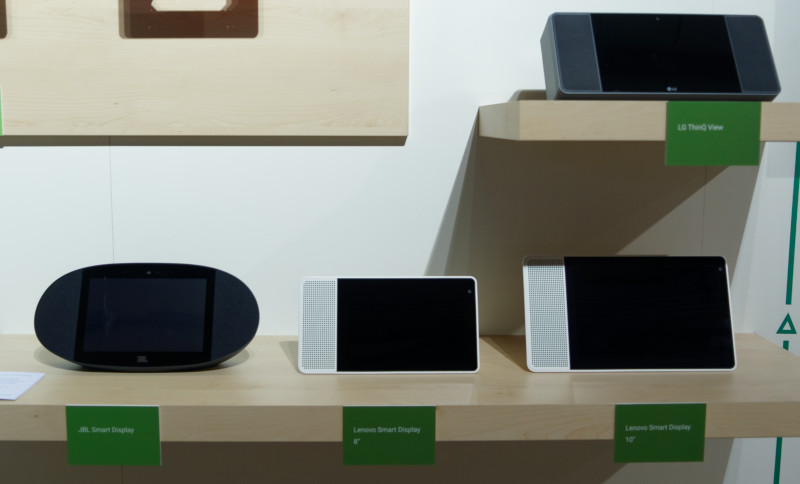 TG9.AI has reference designs for smart speakers and has customers including Lenovo, LG and JBL. Image:Meko
TG9.AI has reference designs for smart speakers and has customers including Lenovo, LG and JBL. Image:Meko
XGimi is a Chinese maker of DLP-based mobile projectors that have high quality sound from Harman/Kardon and JBL. The units are designed to be very flexible to place in the environment and staff told us that they have eye detection systems that can shut the projector down to avoid high brightness going directly in to the eye.
The H2 unit provides 1350 lumens of output from an LED light source and FullHD resolution and has auto focus and auto keystone correction. It costs around €1,000. The projector is a full Android-based system built around the Mstar 6A838 chip with 2GB of RAM and 16GB of ROM.
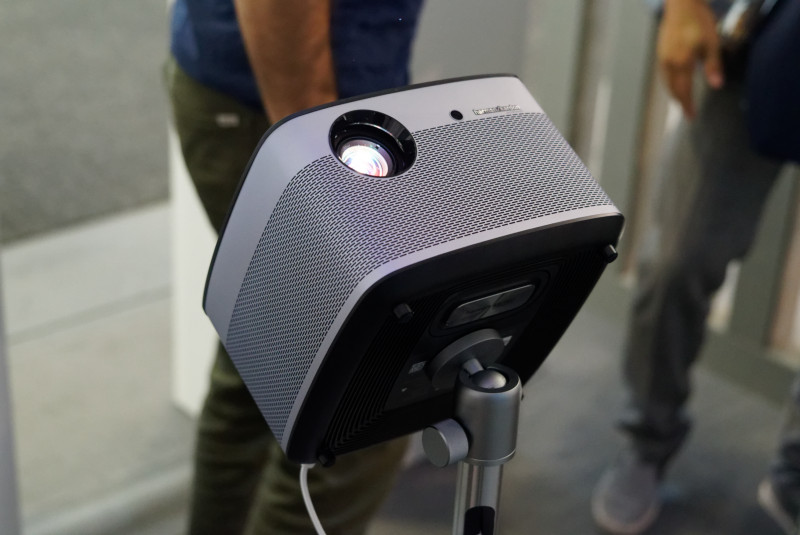 The XGimi H2 has a complete Android system. Image:Meko
The XGimi H2 has a complete Android system. Image:Meko
The Aurora model has JBL audio and has native resolution of 1280 x 720 with 350 Ansi lumens. It’s cheaper than the H2 at around €700.
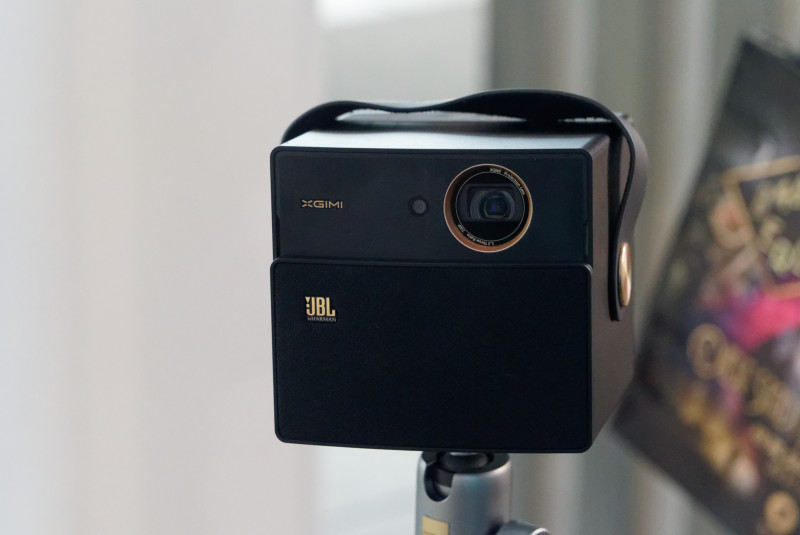 The Aurora has JBL audio. Image:Meko
The Aurora has JBL audio. Image:Meko
XGimi was also showing a good looking laser TV that it is looking to introduce in 2019 and that is likely to cost around €10,000 including a high contrast ambient-rejecting screen.
ZTE was at the show and highlighted the Axon 9 Pro that we reported on last week (Pixelworks Iris Processor Used in ZTE Axon 9 Pro Smartphone)
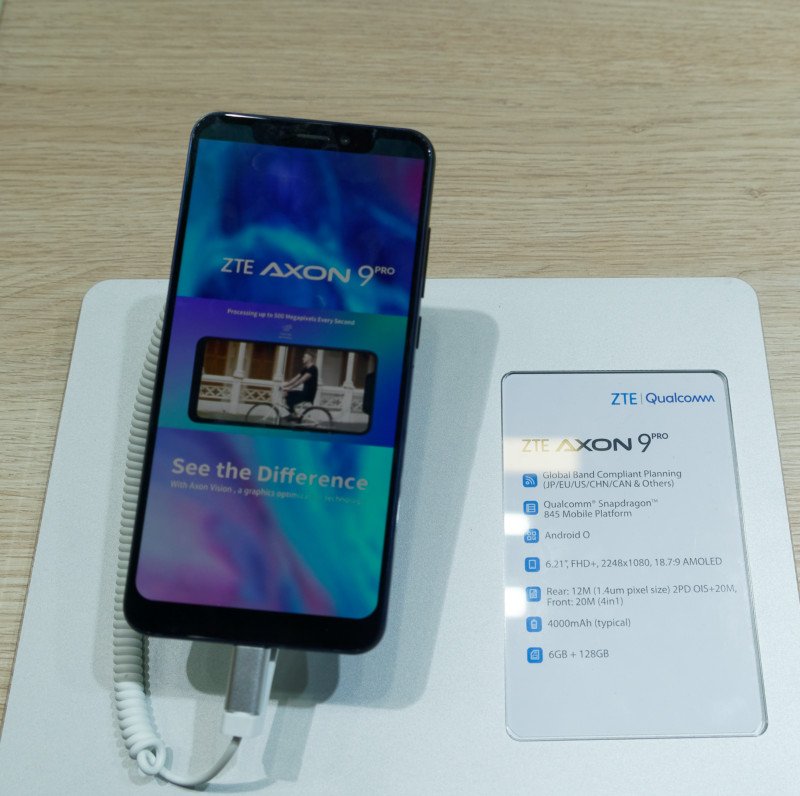 The Axon 9 was launched before IFA. Image:Meko
The Axon 9 was launched before IFA. Image:Meko

